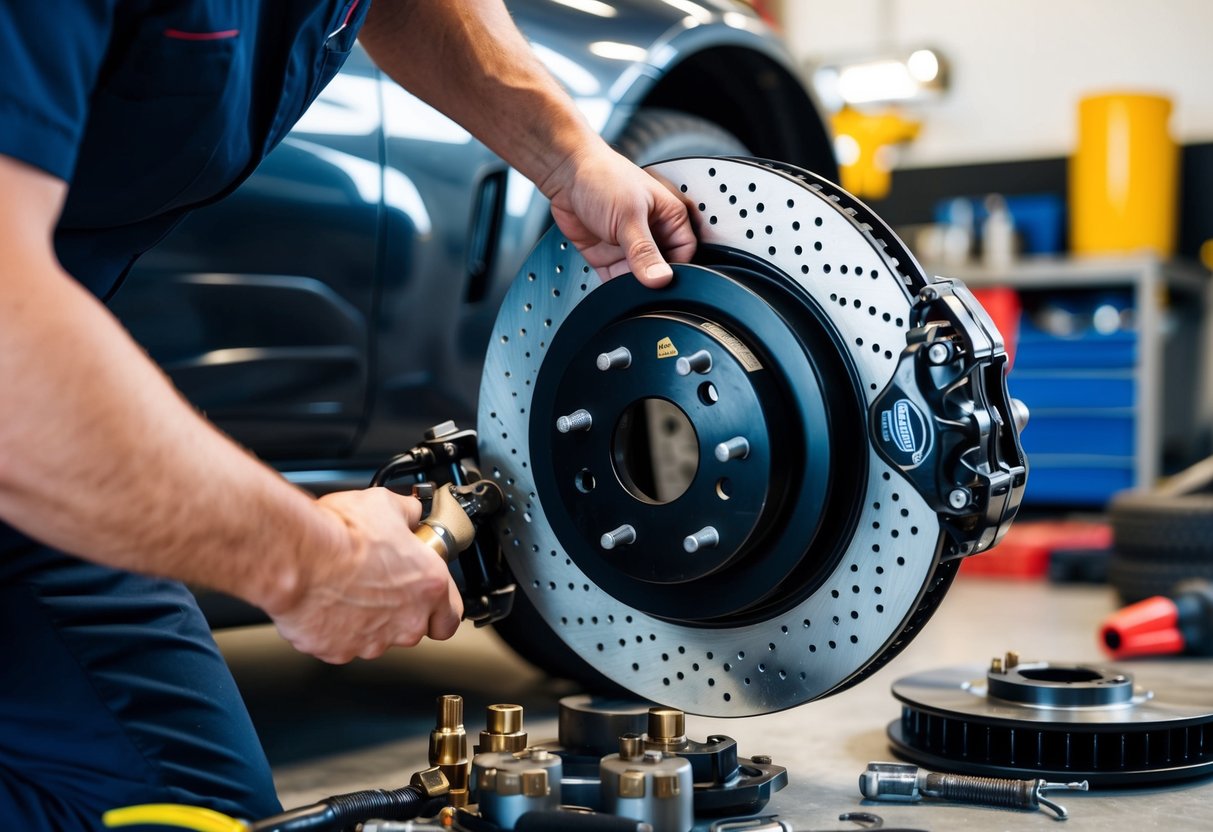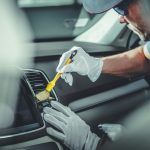Performance Brakes Installation: Enhance Stopping Power with Ease
Choosing the Right Performance Brakes

Selecting the appropriate performance brakes is essential for enhancing braking efficiency and safety. Consideration of various upgrade options, brand comparisons, and driving conditions will inform a more tailored choice.
Assessing Brake Upgrade Options
When exploring brake upgrades, determining the specific needs for performance improvement is crucial. Different vehicles may require varied modifications, such as larger rotors or high-quality brake pads. Assessing existing brake systems can highlight deficiencies and areas that need enhancement. For example, investing in upgraded calipers can improve brake modulation and force distribution.
Understanding the benefits of each component is necessary. A complete kit, like the Stoptech Preferred Big Brake Kit, offers comprehensive improvement. This kit often includes rotors, pads, and calipers designed for high performance, making it ideal for enthusiasts and those seeking substantial stopping power enhancements.
Comparing Brake Brands and Products
There are several prominent brands to choose from when selecting performance brakes. Baer Brakes and Stoptech are industry leaders known for their quality and reliability. Baer Brakes are often chosen for their advanced engineering and durable materials. Their systems are designed for those who require premium performance without compromise.
Stoptech provides a range of options tailored to various driving styles. Their products, such as their Big Brake Kit, are popular for their ability to handle demanding conditions. Evaluating these brands involves considering factors like price, performance under pressure, and compatibility with specific vehicle models. Quality and after-sales support further distinguish these offerings.
Matching Brakes to Driving Conditions
Performance brakes must align with the intended driving conditions. For daily city driving, pads with consistent stopping power at lower speeds might suffice. Conversely, track enthusiasts should look for brakes designed to withstand high temperatures and repeated use.
Weather also plays a role in brake selection. Regions with frequent rain or snow require products that maintain grip and performance in wet conditions. Understanding these factors ensures selection matches the driver’s needs, enhancing safety and performance in diverse environments. This approach ensures that the upgraded brake system performs optimally, regardless of the environment or usage.
Installation Process Overview

To install performance brakes effectively, an understanding of the necessary tools and a clear, precise step-by-step guide ensures a smoother experience. Following these outlined steps can enhance stopping power efficiently.
Required Tools and Equipment
A secure installation begins with having the right tools and equipment. Essential tools include a socket set, wrenches, jacks, and brake cleaner. Torx or Allen wrenches may be needed for specialized brake systems. Having a torque wrench is crucial for ensuring all bolts are tightened to the manufacturer’s specifications.
Safety gear like gloves and eye protection should always be used. High-quality brake pads, rotors, and new brake fluid are necessary components. Verify that all parts match the vehicle’s specifications to ensure compatibility and achieve the best results.
Step-by-Step Brake Installation Guide
Begin by loosening the lug nuts slightly before lifting the vehicle. Securely jack up the vehicle and remove the wheels. Carefully remove the caliper bolts, taking care not to damage the brake line. Extract the old pads and rotors, checking for excessive wear or damage to other components.
Install the new rotors and secure them with any retaining clips or screws. Slide the new brake pads into the caliper bracket. Carefully reinstall the caliper, making sure the brake lines are not twisted or pinched. Tighten all bolts to the specific torque setting required.
Lastly, lower the vehicle after all brakes are assembled. Pump the brake pedal to ensure it feels firm, then top up the brake fluid reservoir if needed. Conduct a test drive in a safe area to ensure the new brakes function correctly. Adjust any settings as necessary to optimize performance.



